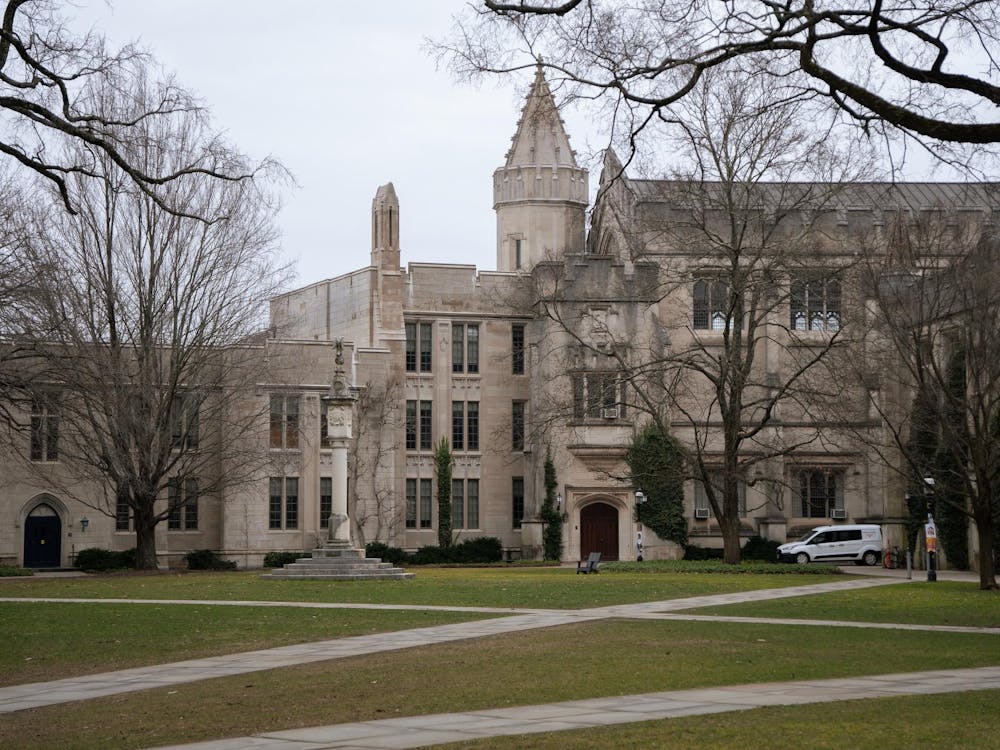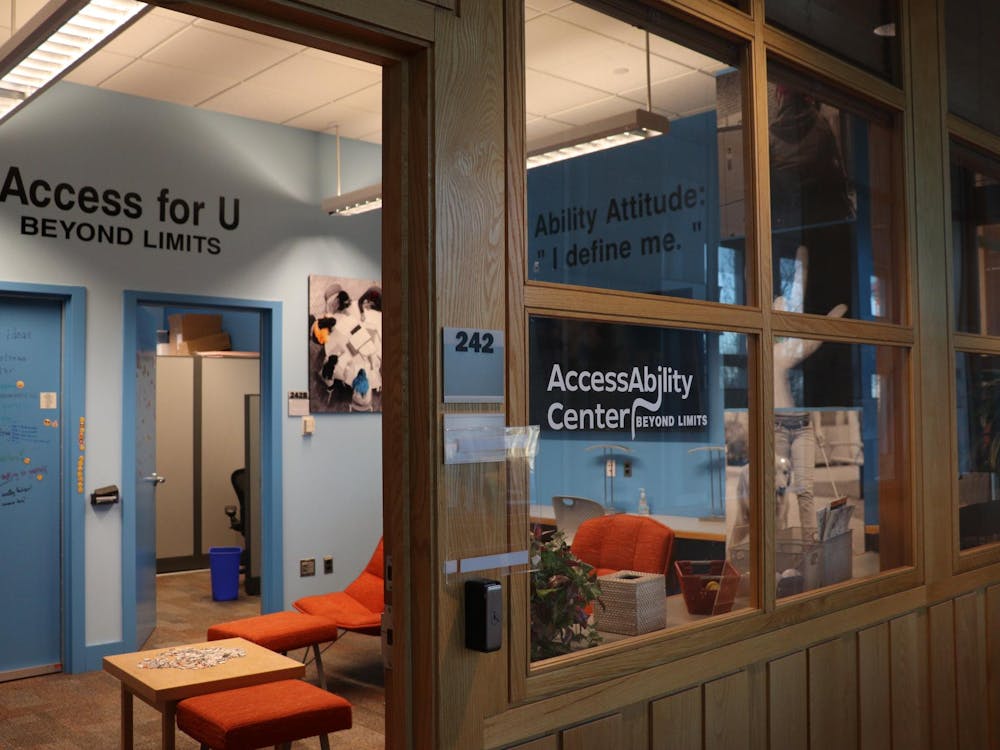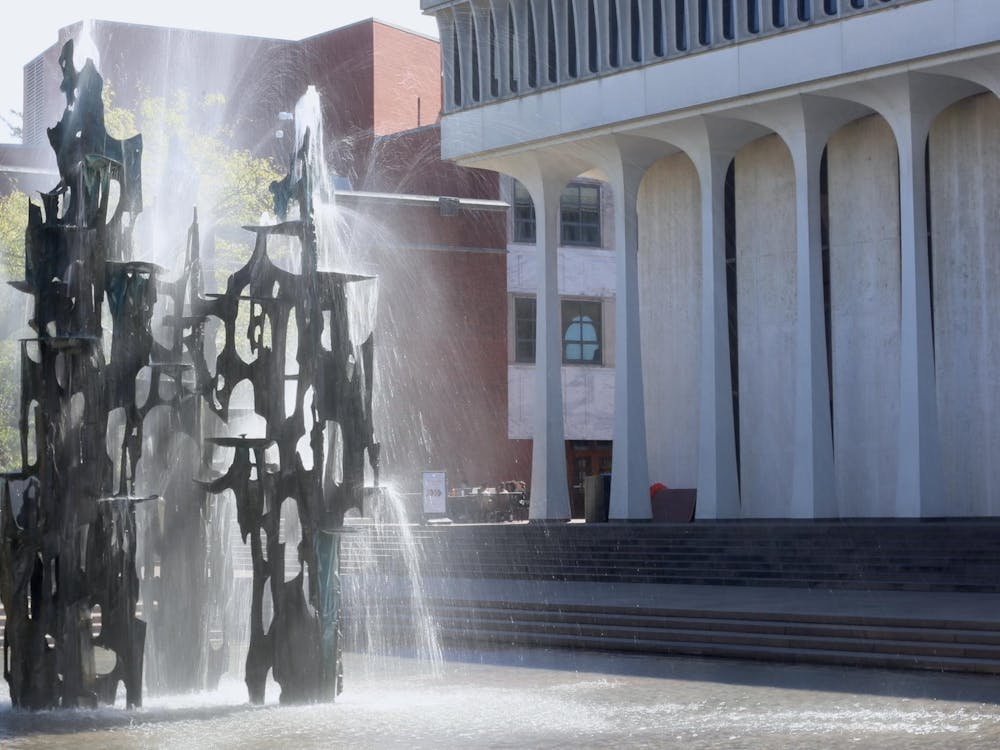The last 15 years have seen the Carl A. Fields Center move to a new location, as well as protests over the killing of Michael Brown by a Ferguson, Mo., police officer and the theme of American structural racism.
2002: Black Arts Company
Nneka Nwosu Faison ’05, a former member of the Black Arts Company, said that in the fall of 2002, BAC Drama posters with quotes from W. E. B. DuBois promoting a play were torn down. The play was BAC Drama’s first attempt at serious theater, and the posters showcased quotes from someone whose work was taught at the University, Faison said.
“I spent all of my Thanksgiving making these posters and printing them out,” she said. “It was disappointing to have that ripped down.”
Morgan Jerkins ’14, former president of BAC Drama, said that she remembered having to fight for spaces to practice, unlike better-funded clubs.
Jerkins is a former columnist for The Daily Princetonian.
BAC has faced problems because it was not as well-funded as other groups, and members were thus confined to Black Boxes instead of theaters, she added.
2008: The night of a historic election
On Nov. 4, 2008, Barack Obama, husband of Michelle Obama ’85, became the first African-American president of the United States.
Student were following the election all over campus, Reginald Galloway ’11 said. Organizations like the Black Student Union hosted watch parties to see the results live at venues like the old Fields Center.
“Just being on campus that particular night was a very special moment for a lot of people,” he said. “The campus atmosphere was electric.”

Galloway said that the night was particularly special for him because of an interaction he had with professor emeritus Cornel West GS ’80 at McCosh Hall.
“I was in the courtyard when Obama was actually proclaimed the winner,” he said. “I went up the steps and saw Cornel West, and he said something to the degree of, ‘It’s your time now.’ I’ll never forget that.”
Galloway added that the next day, professors in all of his classes, including Spanish, deviated to discuss Obama’s victory speech.
2009: Fields Center moves to its “rightful place”
On Sep. 17, 2009, the Carl A. Fields Center was opened on its new location at 58 Prospect Ave. It had formerly been located on 86 Olden St.
The Third World Center was renamed the Carl A. Fields Center in 2002 to both honor the legacy of former assistant Dean of the College Carl Fields and detach itself from the negative connotations of being labeled “third world,” Galloway said.
Galloway said he had been involved with the director of the center to try to rebrand the Fields Center, which was built in the place of an eating club that went bankrupt and was later purchased.
“The center of campus life — of campus social life, at least — is Prospect Ave. and the eating clubs,” he explained. “So we have the majority of the Princeton student body partaking in the eating club culture and the center of the African American social lives being held at the Carl A. Fields Center.”
The move was a powerful symbolic moment for the African-American community, Galloway said, because its social hub was now in the same place as the eating clubs and African-American alumni felt they had gained visibility.
April 2014: They, Too, Are Princeton
Several University students took part in the “I Am” movement, which began with “I, Too, Am Harvard” and included posting pictures of African-American students describing their experiences at their respective colleges on Tumblr.
Naimah Hakim ’16 said that the campaign sought to highlight issues of diversity. The Black Student Union had held a meeting in April to discuss whether the University wanted to participate in the already-popular movement and later organized the campaign, Hakim said.
“It was a consensus toward the end of the meeting that it would be moving for members of our own community to see our faces to see faces that were familiar to Princeton,” she said, “and that for all those reasons and more, we decided to take part.”
However, some students did express concern about whether the University community would contribute meaningfully to an already highly publicized issue, she explained.
Jim Floyd ’69 said that he was deeply impacted by the “I, Too, Am Princeton” movement.
“What struck me most was that many of the comments that were depicted in those stills were things that I remember guys saying in my years, I know people said them in the ’70s, in the ’80s, in the ’90s, in the early 2000s,” Floyd said, “and it’s very disappointing at least to still hear students saying some of the same things in 2014, and having the same reported experiences or depicted experiences at this point in time after all that the University has gone through in identifying these problems and setting up various groups to address them.”
Movements like this one showed that though the University had made progress, there is still room for improvement, Melvin McCray ’74 said.
“When people feel alienated to an extent in which they’re willing to go out publicly and make statements, you know, you pretty much can’t deny that,” he said. “If students feel alienated, if students feel like they are the other, if students feel as though they’re not integral parts of the University, then you have to take note of it. And you have to realize that there are some problems that lingered. And hopefully, they will be addressed.”
November 2014: Black Lives Matter
On Nov. 25, over 300 students marched along Prospect Ave. with chants and signs that read, “Hands up, don’t shoot,” “No justice, no peace” and “Black lives matter.”
The protest came after a grand jury decided not to indict Darren Wilson, a white police officer, in the killing of Michael Brown, an African-American teenager, in Ferguson.
Avanthi Cole ’18 said this demonstration made her feel connected to the University community, as people of all races were present at the protest, showing the belief that black lives mattered was not limited only to minorities.
“I can relate to [the subjects of police violence] in that, you know, that could have been me,” she said. “That could have been my brother. That could have been any of the male members of my family. So I felt like I had to show my support.”
On Dec. 4, 600 students turned up at a walkout staged in response to the Ferguson proceedings, Hakim said,as well as another grand jury decision not to indict white police officer Daniel Pantaleo in the killing of Eric Garner, an unarmed African-American, in New York.
“Postering had happened all throughout the night before,” she said. “Posters had been placed underneath the doors of the entire school to get people to walk out of whatever class they were in at 11:30 a.m. with their hands up.”
After some speeches and chanting, there was a 45-minute “die-in” at Frist Campus Center where people lay on the ground to symbolically represent and call attention to police brutality, Hakim said.
It was very cold on the day of the walkout, she added.
“I think that most people who were lying on the ground were shivering,” she said."But nonetheless, a vast majority of the student body that attended the rally stayed through to the end of the die-in, even despite the weather."
Both students and professors took part in the event, Hakim noted.
“Princeton is somewhat a microcosm in the sense that we don’t really experience what lots of other cultures or other areas do,” Cole noted. “We’re really privileged in that sense. But it’s still a concern of mine given that there have been so many injustices with the police and with law enforcement. I feel for them.”
1960-2015: The most challenging moments
University trustee Brent Henry ’69 said that people would often say hurtful things that could either be ignored or confronted. He had a roommate who said the only African-Americans he’d ever seen before he got to Princeton were the people who cleaned his office, he added.
“People just didn’t understand the depth of feeling that a lot of black students and black people at that time really had,” Henry said.
Melanie Lawson ’76 said that when she was in the Wilson School, a professor told her that she could not compete on the level of the class, was not a good writer and was not an appropriate student for the class.
“To be told that I wasn’t enough by a professor that I admired was very painful,” she said, “and it took me a moment when I thought that well, maybe I am a terrible student.”
Lawrence Hamm GS ’80 said racism was real at the University, adding he had a racial epithet directed at him while standing at a corner on Washington Road.
“The most challenging was seeing so many of my friends unhappy about being there,” Rhinold Ponder ’81 said. “I think that Princeton did not have the type of support for people of color that was required.”
Eric Holmes ’85 said African-American students felt extremely isolated because neither their professors nor their classmates believed in and supported them. Holmes added that a professor once told him during office hours that he did not “really expect” Holmes “to be able to understand this material.”
Karen Ruffin ’86 said everybody would view African-American students as if they were experts on all things African-American. This was not necessarily done with any malice but mainly out of ignorance, she said.
“I had people say things to me like I didn’t know black people could have long hair,” Ruffin explained.
Joseph Robinson II ’04 said that it was not uncommon for African-American students to be denied entry into eating clubs that were still accepting Caucasian and Latino students because someone didn’t want African-Americans in the club.
“I think it’s very wrong that the students get to decide whether other students have the quintessential Princeton experience,” Cole, a current student, said. “And I feel like just because of my color I will be excluded by other students — by my peers.”
Cole added that she felt that African-American people need to work twice as hard to get half as much as other people do.
“Blackness is one step below every other minority based on the history of this country and opinions other people have,” she said. “We’re considered second-class citizens. We have to work twice as hard as other people do to get what we deserve.”
1960-2015: The stories of the Tigers’ favorite moments
African-American alumni recalled a number of fond memories at the University as well.
Floyd said he remembered several times in 1967 and 1968 when all of the African-American students partied together in one suite.
“The music was loud, and it was very hot, and everybody had a good time,” he said.
“One of my favorite memories was the first time it snowed — going out and seeing the snow not only all over the campus but going down by the lake and just seeing how beautiful the place was,” Lawson said.
Hamm said he was grateful for the Civil Rights Movement that enabled him to enroll at the University.
“Regardless of how talented you were, there was a time when race was a bar,” he said.
Ponder and Ruffin said they had fond memories of their time at the Third World Center.
“I spent a lot of time with friends there,” Ruffin said. “We would take study breaks late at night and you know, shoot pool and go to Hoagie Haven. We would just sit around and talk, and it was just a very nurturing and inspiring place to spend time.”
There were always lots of social gatherings at the Center, but one of the most special evenings was when Rosa Parks came there to speak, she said.
Holmes said the Center was exciting with a number of parties and performing arts programs. He added that a tradition called the Cultural Show, where people from all over the world would do things that were representative of their culture, was particularly exciting.
Charles Brown ’02 said that his favorite memory was graduating while having all his family and friends around.
“It was particularly important because both my grandmothers were there and I’m sure that it was pretty cool to have a grandson who was graduating from Princeton,” he said.
Spencer Merriweather ’00 recalled the exchange of culture as his favorite memory, like that of tasting the Indian delicacies of paneer and samosa for the first time at a South Asian Student Association event.
Efforts to improve the University for everyone shouldn't stop, McCray said.
“The University is on a positive trajectory, but there’s still some ways to go, clearly,” he said.








